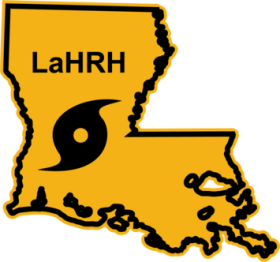
LaHRH102: Mold Exposure and Health Effects
Course Description:
LaHRH 102: Mold Exposure and Health Effects is second in a four-course learning series.
After natural disasters such as hurricanes and floods, excess moisture and standing water contribute to the growth of mold in homes and other buildings. When returning to a home that has been flooded, be aware that mold may be present and may be a health risk for your family.
This course is designed to provide information on how quickly mold grows after hurricanes and floods occur in Louisiana and steps that can be taken to aid in mold prevention and remediation.
Target Audience
Academic Faculty/Staff, Federal Government Employees, State Government Employees, Local Government Employees, Non-Government Employees and Students.
Learning Objectives
- Understand the basics of mold and mold growth
- Know how exposure to molds can contribute to health effects and concerns
- Know when mold remediation should occur and how to properly and safely do so if needed after mold exposure
Instructor:

Melanie Ramson, MSPH
Melanie Ramson is currently employed by the Louisiana Department of Health (LDH), Office of Public Health’s (OPH) Bureau of Community Preparedness (BCP) as a Logistics Program Monitor. This role represents a shift to a role that facilitates emergent response to hazards both disease and weather related. Coordination and procurement of the equipment, goods, and services required to respond appropriately and in a timely fashion are hallmarks of this position. Prior experience as an Environmental Health Scientist with OPH/Section of Environmental Epidemiology and Toxicology (SEET) Indoor Environmental Education Service (IEES) has proved to be essential at BCP.
Ms. Ramson has a Master of Science in Public Health with a concentration in Risk Assessment/ Regulatory Toxicology from Tulane University School of Public Health & Tropical Medicine’s Environmental Health Science Department. She has also previously worked in SEET’s Mercury Fish Advisory Program (2003-2006), first as a graduate intern and then fulltime, after graduation in 2003. Her experience includes analysis of mercury in fish tissue data and working on the issuance of fish consumption advisories in the state of LA.
Available Credit
- 1.00 Participation/CETulane Professional and Continuing Education (PaCE) awards 1.00 hour(s) of credit for completing LaHRH102: Mold Exposure and Health Effects
Price
Required Hardware/software
System Settings
This course is designed to work most effectively if your computer and internet connection meet certain minimal requirements. This course can be accessed using a Windows 10 PC or a Mac with High Sierra1, Mojave, or Catalina. Pop-up blockers should be disabled when viewing the course. Internet Explorer 11 (for Windows 10), or the current version of Google Chrome, Mozilla Firefox, or Apple Safari (for Windows 10 and or Mac) is required. Many of our courses require Java and JavaScript enabled.
Links to External Websites
Links to websites outside this course will open in a new window or tab. Some browsers may minimize the course window. If this occurs, maximize the course window to return to the course.
Adobe Acrobat Reader (for desktops and laptops)
Adobe Acrobat Reader is required to access some documents in this course. If you need to download a free copy of Acrobat Reader, click here.
Internet Connection Speed
A minimum download speed of 1.5 Mbps is recommended for an optimal experience, which is commonly the speed associated with a basic DSL or a cellular/satellite connection. A faster connection, such as cable or fiber service, with further enhance your online experience. A Wi-Fi connection is generally acceptable, but it is dependent upon one of the two services mentioned above. You can check your internet connection speed at http://www.speedtest.net/.

 Facebook
Facebook Twitter
Twitter LinkedIn
LinkedIn Forward
Forward